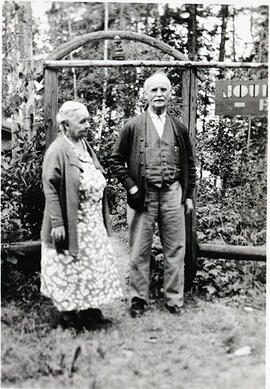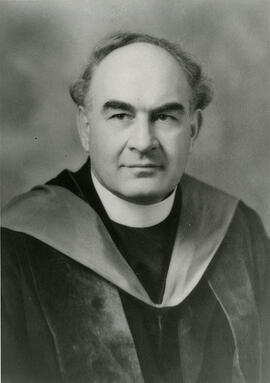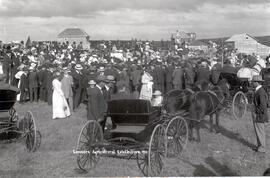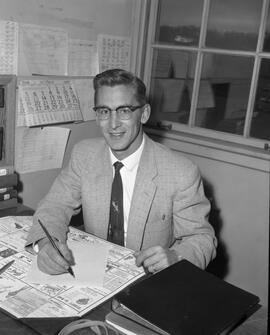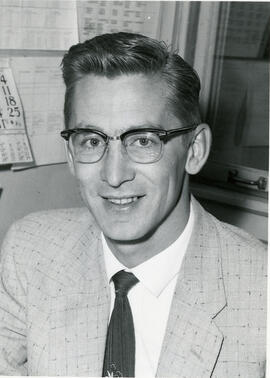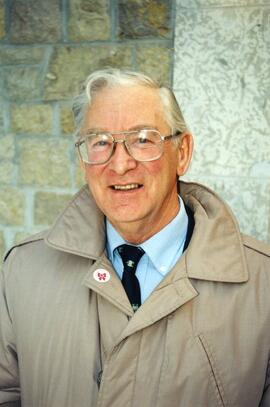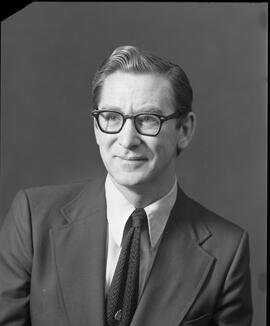Walter C. Murray and Mrs. Christina Murray
- A-5576
- Item
- [before 1948]
Walter C. Murray and Mrs. Christina Murray standing outside in front of a gateway made of poles and bushes.
Bio/Historical Note: Christina Cameron was born in Fredericton, New Brunswick in 1866. She enrolled in the honours course in English, French and German at the University of New Brunswick in 1890 and graduated four years later, winning the Alumni Gold Medal as the most distinguished student in classics. She next attended Normal School and subsequently accepted a teaching post in its Model School. In 1895 she married Walter Charles Murray, who had been a former classmate in high school. The couple settled in Halifax for the next fourteen years. In 1909 Christina Murray brought her household, including three daughters, west to join Dr. Murray in Saskatoon where he had accepted the post of first President of the newly created University of Saskatchewan. Over the next four decades Mrs. Murray was to maintain an active role in both the university and the local community serving on the executive of a number of organizations. In honour of her many years of service the University granted her an honourary Doctor of Laws degree in 1938. She died at Saskatoon on 4 July 1947.
Bio/Historical Note: Walter Charles Murray, first president of the University of Saskatchewan, was born in Kings County, New Brunswick, in 1866 and received his BA with honours in 1886 from the University of New Brunswick. Having won the Gilchrist Scholarship for Canada, for continued studies overseas, he attended the University of Berlin and the University of Edinburgh, where he received his MA with first class honours in 1891. Later that year he joined the faculty at the University of New Brunswick as Professor of Philosophy and Economics. In 1892 he was appointed Professor of Philosophy and lecturer in Education at Dalhousie, where he remained until joining the University of Saskatchewan as president in 1908. Murray served as president for 29 years, retiring in 1937. Murray was successful in building a progressive university with a beautiful campus. His own work was in education and education history, but he was also a supporter of art and music. Murray served on numerous councils and commissions, including the National Research Council from 1916-1932. Murray married Christina Cameron (1866-1947), born in Fredericton, New Brunswick, in 1895. They had three daughters: Christina Cameron Murray, Lucy Hunter Murray and Jean Elizabeth Murray. Murray died in Saskatoon in 1945. The city of Saskatoon honours him with "Murray Place" in the Dundonald area; Walter Murray Collegiate Institute, opened in 1965 and located near Market Mall; the Murray Building on the University of Saskatchewan campus; and President Murray Park, located in the Varsity View neighbourhood.



